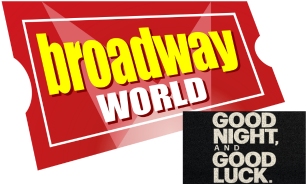Student Blog: Method Acting
Method acting is a great tool to have, but only if an actor uses it properly.

Method acting is a methodical technique in which an actor essentially trains to be their character by living and thinking like them. It becomes more physiological than acting due to the lengths some people will go to in order to “find their character.” Method acting is a helpful tool when portraying a role, but at times can go too far.
The basics of method acting come from the mind of Russian theater practitioner Konstantin Stanislavski. Stanislavski established key principles like building character and creating a role. He emphasized making characters appear believable and convincing to the audience.
A good way to describe method acting is “reality acting.” When going into a role an actor or actress will usually start thinking how their character would think, how they would move, and all their motives. When presenting their role they approach things as that person. It can be very handy when struggling with portraying a role. Method acting helps people understand their character and helps add a sort of dramatic flair to the project they are working on.
In many instances, method acting can go too far. For some actors, they are able to separate their characters' minds from their own, but many can’t and it consumes their mental health for better or for worse. An actor that comes to mind when it comes to pushing the methods in acting is Christan Bale. As an awarding-winning actor, Bale is no amateur when it comes to finding a successful formula to act. Although he is great to watch on screen, his habits have not been healthy ones to get him to his final state for performance. Bale, who is usually 173 pounds, weighed somewhere around 110 pounds in his role in "The Machinist.” In the movie “Vice,” he had to gain weight and ended up somewhere between 225 and 228 pounds, and in the Batman trilogy, he had to gain muscle mass and stick to a strict diet in order to look aesthetically pleasing as Batman. Clearly, Bale is capable of putting his body through physical transformations, but it can’t be healthy to gain and drop weight at such dramatic rates.
I suppose I would say I’m a method actor. Whenever I’ve approached a major role I like to make a character board. My character board has things that remind me of my character or give the essence of my character. One role I had was Judge Wargrave in Agatha Christie’s “And Then There Were None.” Things that reminded me of Wargrave were shades of dark red, the smell of books, and gothic-style architecture. I made a music playlist with songs that helped me get into character. As silly as it sounded, those two methods really helped me understand Wargrave and perfect the way they go about things. I think something important to note about all of this was that I consciously found the differences between my character and I. With Wargrave (SPOILER) I knew they were not of sound mind and an emotionless killer, I let myself get to know Wargrave almost like you know a best friend, but not become them. During rehearsals I had to be in character and at times I made my friends feel uneasy with my role. Obviously, you remind them it’s just a part you’re playing, and that you wouldn’t let the role consume you. When I was Mother Abbess in “The Sound of Music” my character mentality was far less extreme, but the rule of setting worlds apart still stands.
To conclude, method acting can be a highly efficient practice when it comes to acting. Audiences can be thoroughly convinced when actors are putting their all into their character, and really understand a performance better. Before you decide to pursue method acting, ask yourself if your mind is ready for that. Ask yourself if you can mentally handle separating you as an individual and you as your character. I think in order to be a method actor you have to fully understand yourself in order to fully understand your character.
Comments

Videos

